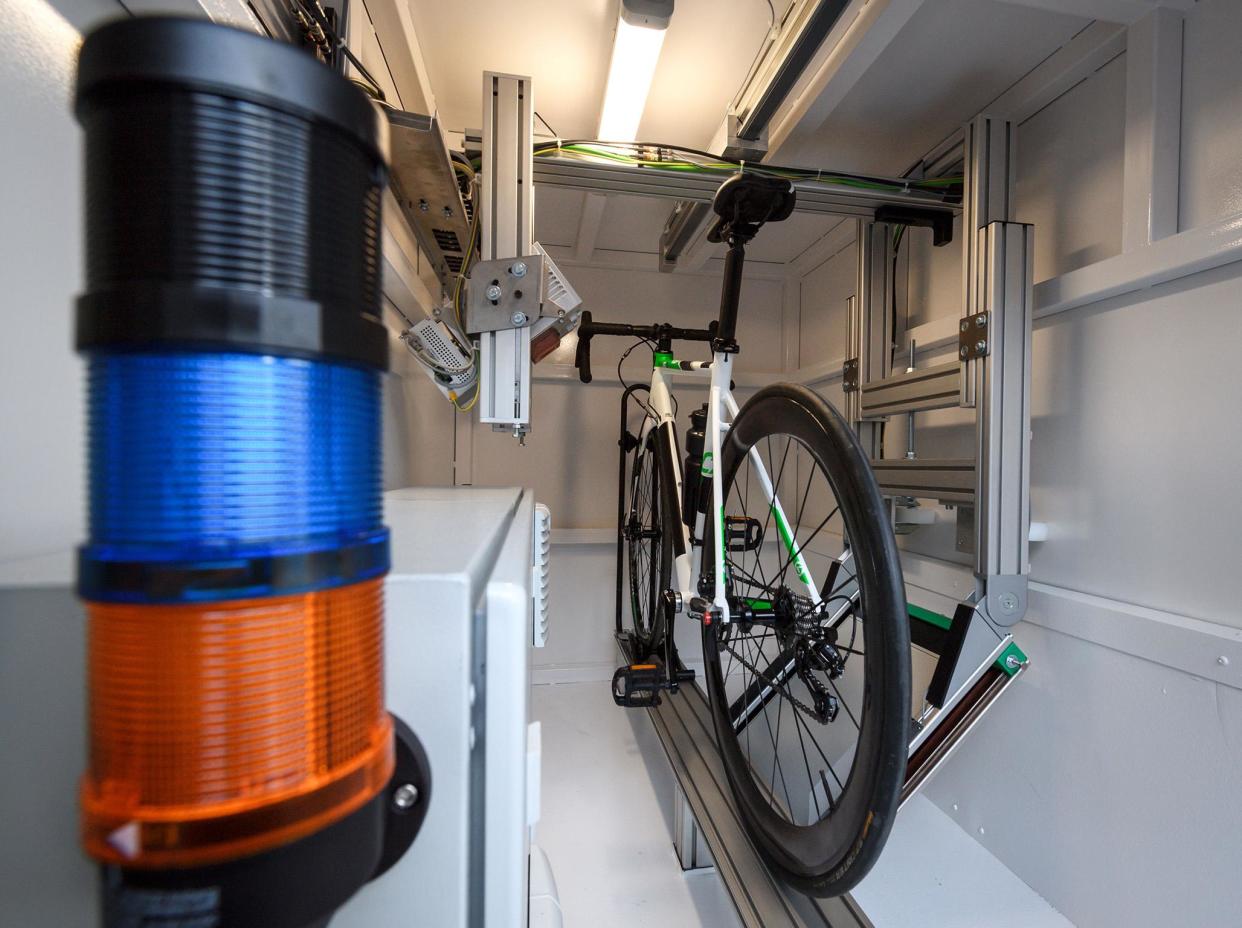X-rays and thermal imaging: UCI unveils new technologies in cycling’s renewed fight against mechanical doping

World cycling’s governing body will install new mobile X-ray machines, thermal imaging cameras and magnometric tablets at key races this season as part of its renewed fight against mechanical doping – the illegal use of covert motors.
The UCI president, David Lappartient, made tackling mechanical doping a key pledge during his election campaign last year, and in November he appointed the retired rider and former Tour de France runner-up Jean-Christophe Peraud as his special commissioner to deal with the issue.
Tablets have been used for several years but their ability to identify motors has been frequently called into question, and the UCI hope new technologies can improve the qualities of detection.
“We’re going to do our utmost so that we won’t have future cases of technological fraud,” Lappartient said in a presentation in Geneva. “The sport has suffered from doping in the past and we don’t want our other riders to suffer anymore.
“Cycling is magnificent sport, one of the most beautiful sports. People must be able to believe in the results; that’s why we continue to fight against doping.
“Technological fraud is easier to resolve than doping. We want to avoid videos on social media that sometimes cast doubts in fans’ minds. We want fans to support and believe the results achieved and also by the work done by the UCI. It’s our responsibility to guarantee the results and we’re determined to do that.”
Lappartient added that the study of performance data has also been considered as another way of detecting motorised bikes, but will not necessarily be implemented.
Punishments for mechanical doping have been increased, with the guilty rider in line for a minimum suspension of six months and a minimum fine of £15,000.

 Yahoo News
Yahoo News 
